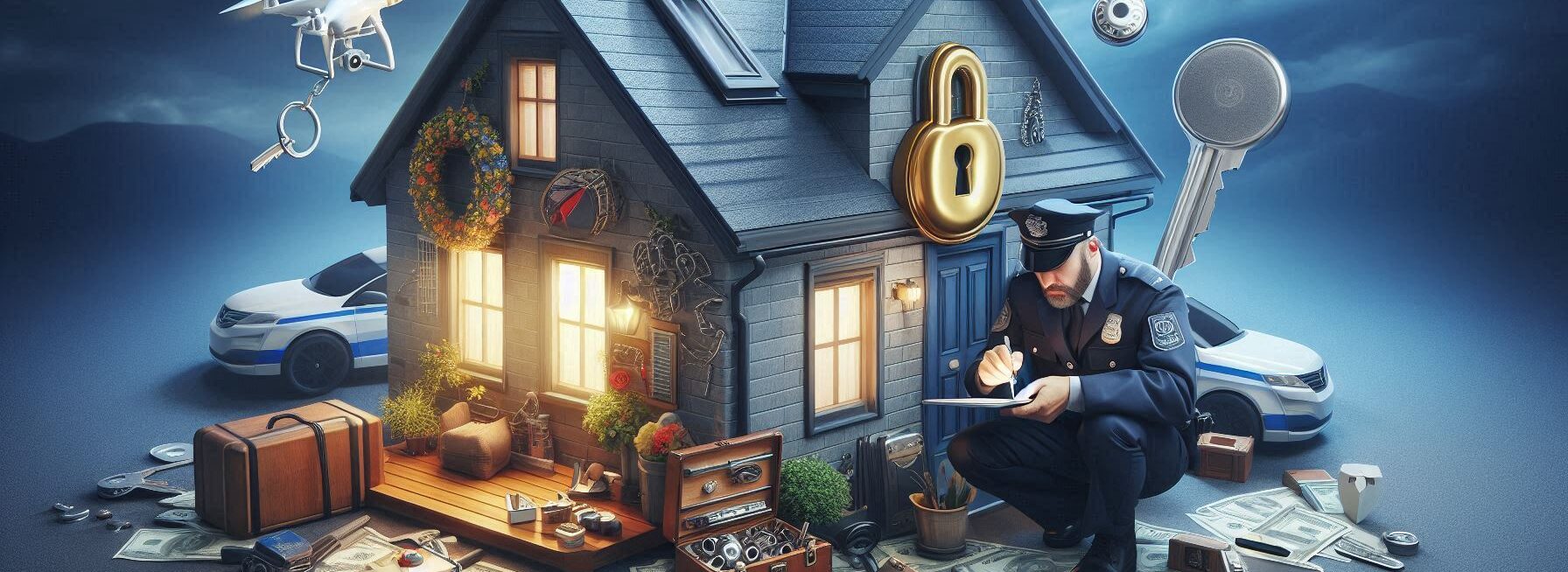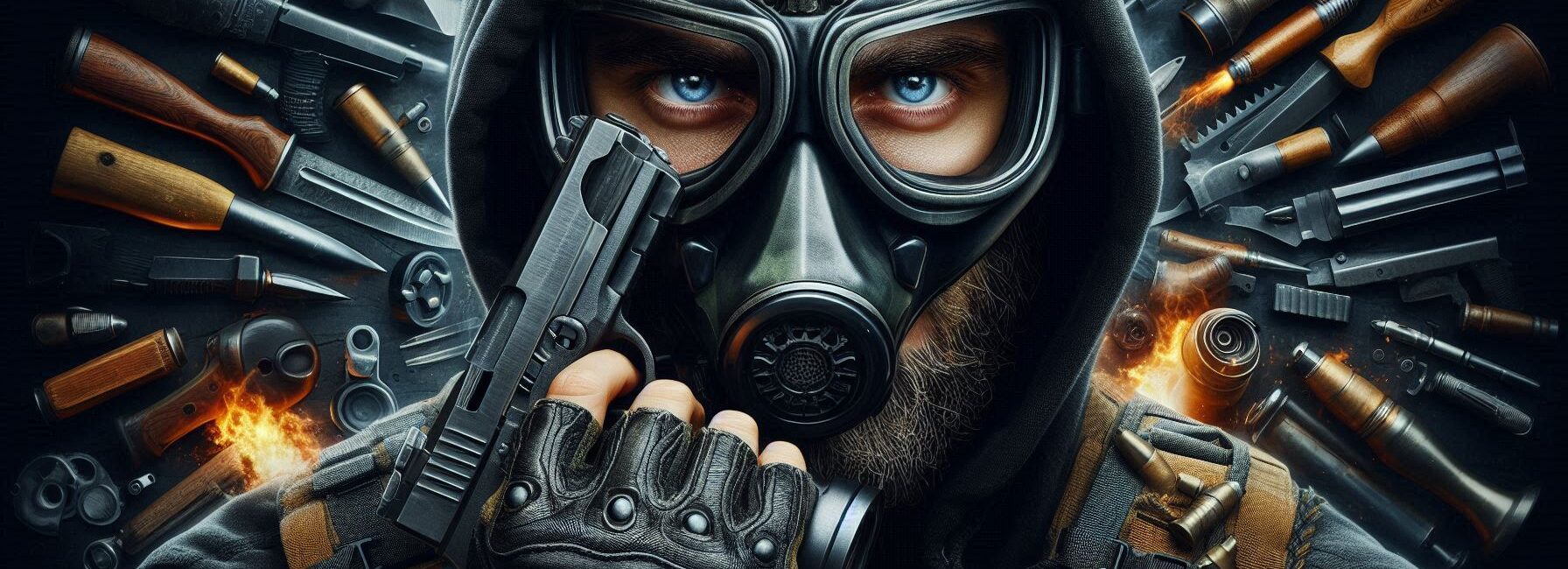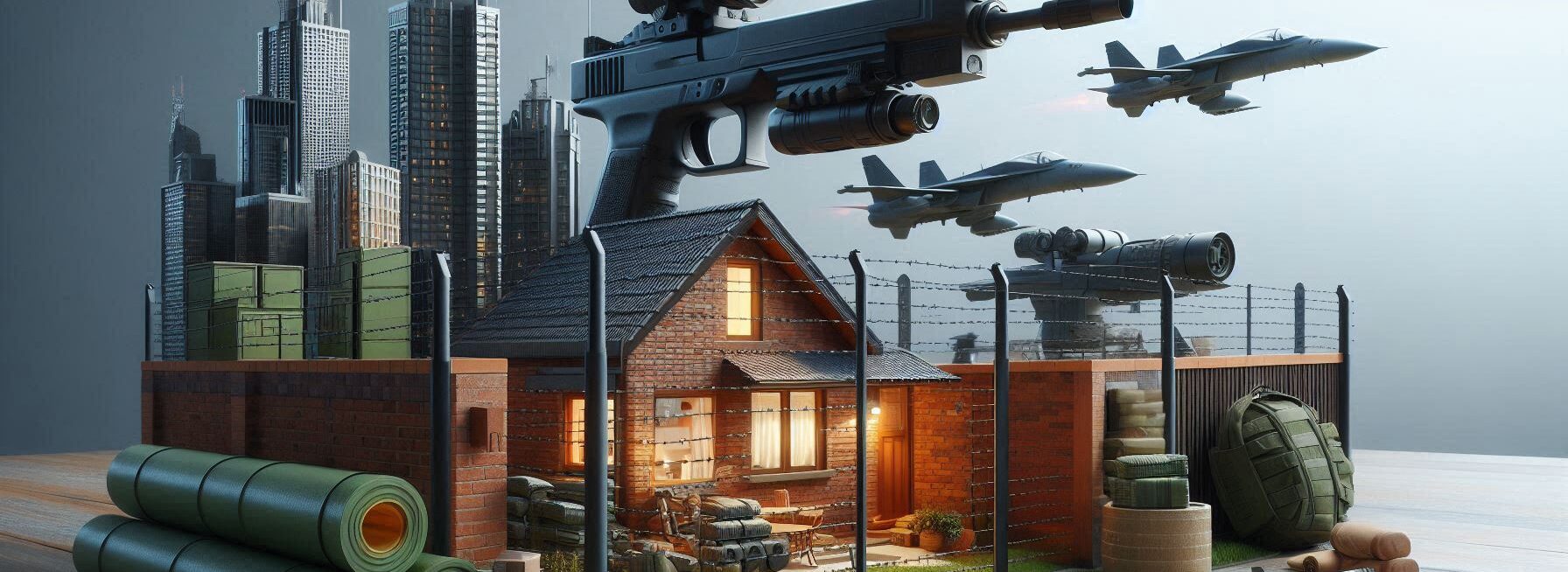Please Note: This post may contain affiliate links. If you click one of them, we may receive a commission at no extra cost to you. As an Amazon Associate, I earn from qualifying purchases.
Last Updated on November 1, 2025 by Kevin Collier
We often think about food, water, and shelter when we think about how to stay alive. But we shouldn't forget how important it is to be safe and protect ourselves! It's really important to know how to defend yourself, whether you're camping in the vast outdoors or at home in an emergency. So get your gear and let's get started on the basics of survival, security, and defense.
Understanding Threats: What Could Go Wrong?
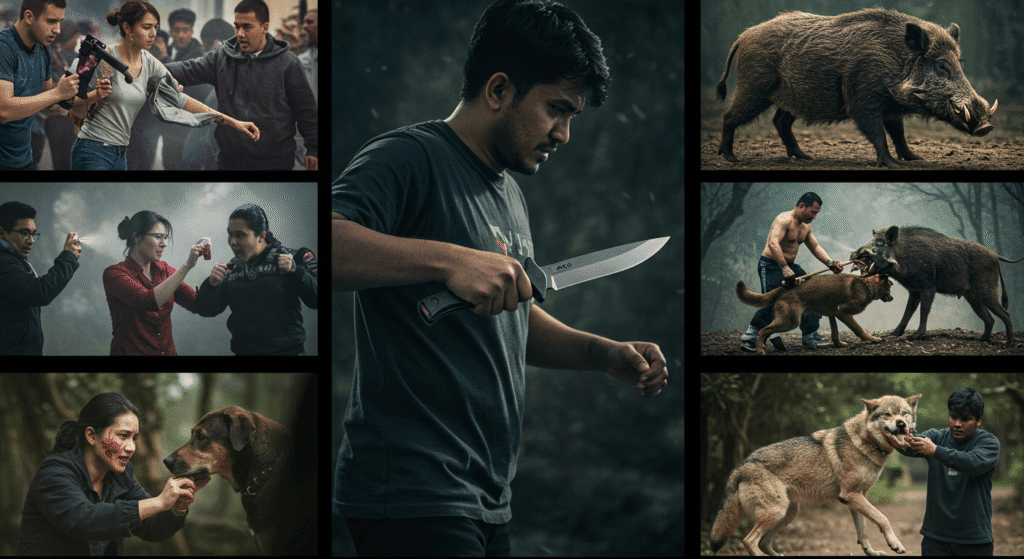
First, let's speak about possible threats. What are you truly up against while you're outside or even in your own backyard? It could be wild animals (like Mr. Bear), other individuals who don't mean well, or even natural disasters that catch you off guard faster than a squirrel on caffeine. Knowing what could put your safety at risk honestly helps you get ready.
I remember hiking with companions and seeing a sign that warned us of bears in the area. At first, I assumed it was simply a pleasant reminder, but then I saw that those bears weren't there for a picnic! The objective is to keep an eye out for anything that could be dangerous, such animal trails or people who look strange.
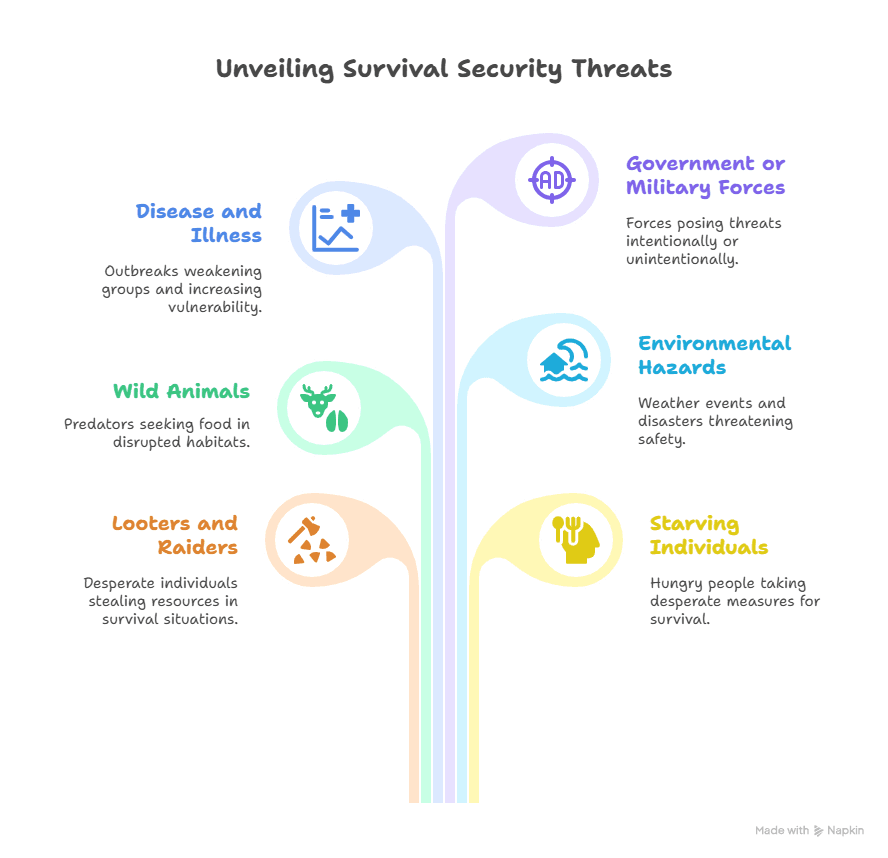
It's interesting that getting ready for these risks doesn't equal being afraid. It's more about being attentive and prepared. When things go wrong, having a plan can make all the difference! You wouldn't go to a surprise party without knowing who was throwing it or what snacks were on the table, would you? Like thus, being ready for any threats lets you handle situations with confidence instead of fear.
When I say “being aware,” I mean paying attention to what's going on around you like a superhero with extraordinary senses. It could be as easy as watching the animals around you or noticing changes in the weather that could mean catastrophe is coming. Have you ever observed that animals appear to sense something's wrong before we do? They have a built-in radar that tells them when something is wrong. If you improve your personal awareness abilities, you can respond more quickly and efficiently when a threat comes up.
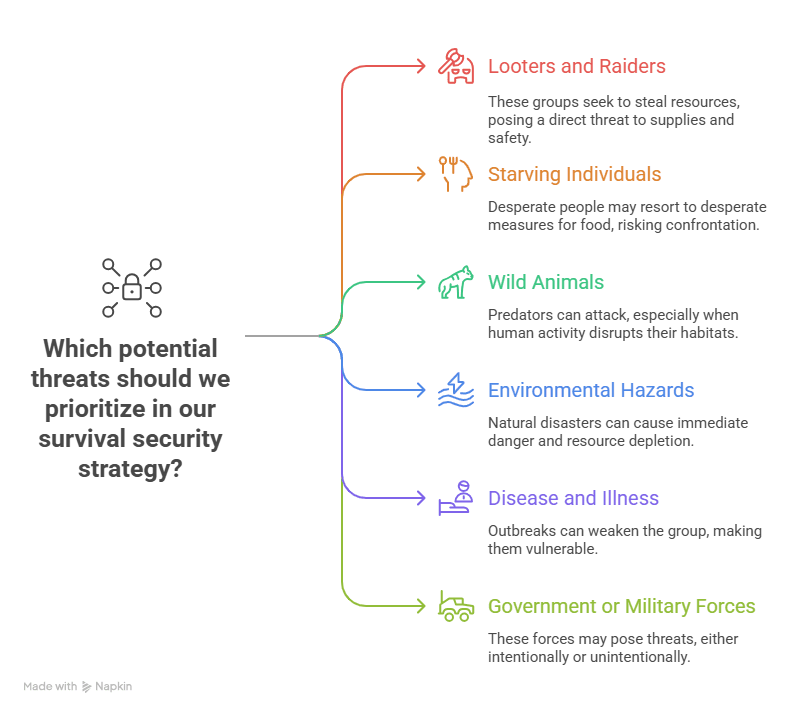
Let's talk about being ready now. It's not enough to just have a backpack full of stuff; you also need to be mentally ready. Imagine that you're in a tough spot, like being lost or having an unexpected run-in with wildlife. If you've already thought about what to do, you'll be able to handle it far better than if you suddenly realize you forgot where you put your granola bars! Imagining different situations can help you relax and figure out what to do.
*** Shop for Survival Gear - Tools - Kits ***
Survival Gear - Bags and Backpacks - Knives - Boots/Footwear - Communication
Outdoor Cooking - Gloves - Hydration - Dry Boxes - Water Filtration Systems
Tents - Sleeping Bags - First Aid Kits - Multi-Tools - Flashlights - Fire Starters
Navigation - Survival Food - Night Vision - Headlamps - Stun Guns - Binoculars
Also, it's really important to make a good plan. It doesn't have to be hard; just think of it like making a plan for your favorite sport. If someone gets lost from the group, make sure everyone understands where to meet up or how to get in touch with each other ahead of time. Planning gives you more time to firmly deal with whatever comes your way instead of wasting time seeming perplexed.
In the end, getting ready for dangers doesn't mean shunning exciting excursions and covering yourself in bubble wrap. It is giving yourself the tools and information you need to deal with problems when they come up—because they will. Preparation is half of the trip, so enjoy it! Life is already full with shocks, so why add more?
Building Your Safety Kit: What Do You Need?
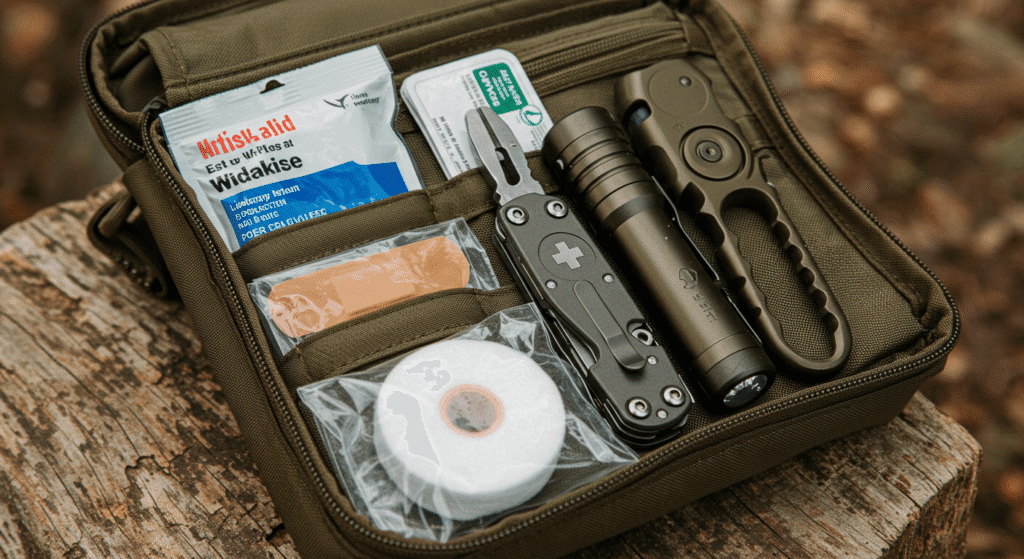
Now that we've talked about possible dangers, let's talk about how to make your safety kit. This is like your survival toolkit, a set of things that can assist you protect yourself when you need to. What should be there, then? Here are some things you need:
1. First Aid Supplies: Band-aids aren't just for kids; they can save lives! Also, add antiseptics and gauze.
2. Tools for self-defense: A whistle can let people know you're in difficulty without you having to scream like a banshee.
3. Flashlight: Let's be honest: no one wants to search for their missing granola bars in the dark.
4. Multi-tool: This tool is like a Swiss Army knife but better! You may use it to open cans and keep bugs away, among other things.
It could seem like a lot of work to pack all these stuff at first, but don't worry! Just proceed slowly and get everything set for action.
Setting Up Camp Like A Pro
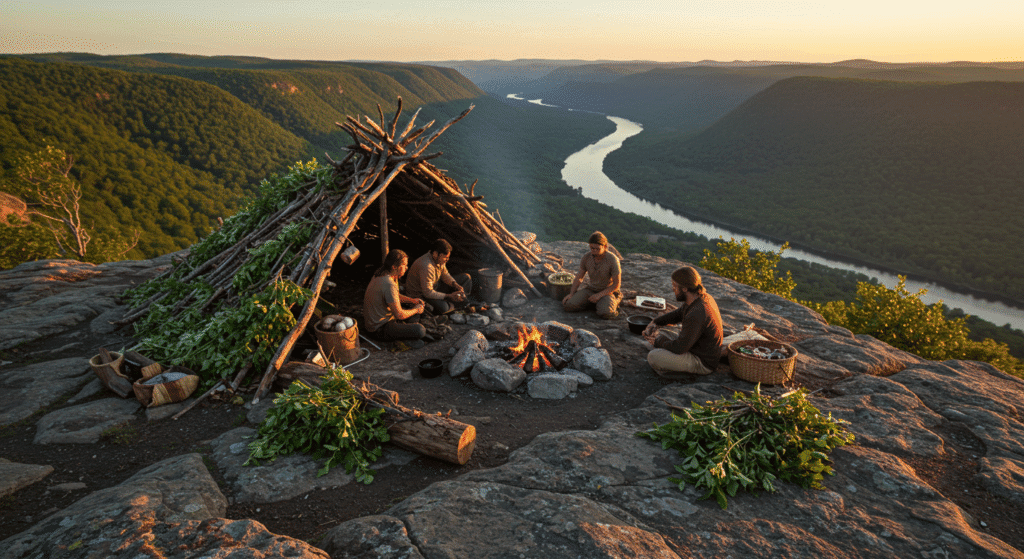
Imagine this: after hours of hiking, you finally get to your campsite and find out you set up just next to an ancient bear trail. Yikes! Where you camp is very crucial for your safety and your defensive plan.
Look for places that aren't close to apparent wildlife paths or regions that are likely to flood (no one loves wet socks). If you can, try to find high ground. This will not only provide you a better view, but it will also keep you protected from surprise visits like raccoons that want to steal your munchies!
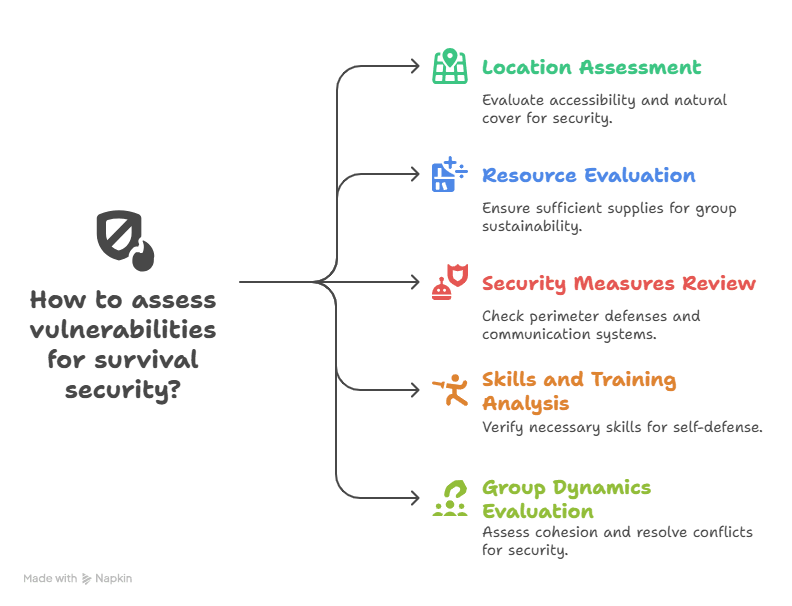
Speaking of setting up camp the right way, make sure you know how far away you need to keep food from where people are sleeping (around 200 feet). Believe me, nothing spoils a good night's sleep faster than sharing a room with wild animals looking for food at night! You're in your cozy sleeping bag, dreaming sweetly about marshmallows and campfire stories, when you hear something stirring outside. Is it a soft wind? A raccoon that is nice? Or worse, a bear that believes your granola bars are the main dish? Oh no!
It's not only a good idea to keep your food away from you; it's almost like survival 101. Animals have an amazing sense of smell, and if they scent those tasty treats, they'll come to your campground like kids to a candy store. I all, who wouldn't want to break into an all-you-can-eat buffet next door? So, hiding your food away from your tent isn't just a good idea; it's necessary for keeping both you and the animals in the area happy.
What does “200 feet” truly look like in nature? If you can see the tree line from the entrance of your tent, imagine taking about 70 steps. That should get you close enough that any hungry visitors will have to work for their dinner! It's also a good idea to put food in high places or hang it from trees if you can, since some animals are surprisingly good at climbing. Have you ever seen a squirrel climb a tree trunk? Those small boys can do flips!
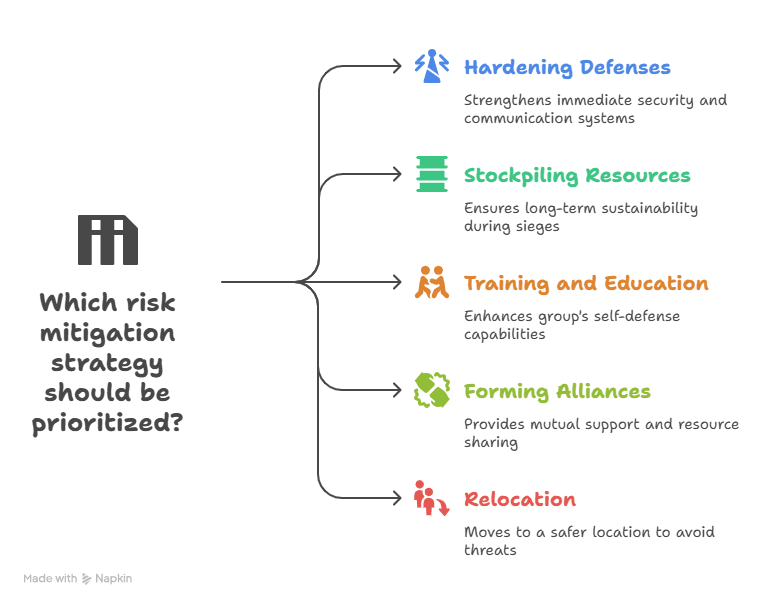
Also, think about how you keep your food. Bear-proof containers aren't just for show; they really do keep our animal pals out. If bears can't get inside them, other animals probably won't be able to either. And let's be honest, who wants to wake up to find raccoons stealing their peanut butter jar in a cute but messy way?
Also, keep in mind that hygiene is important even after you've moved food away from where people sleep. After meals, make careful to clean all of your cooking tools well. The scents of leftovers can last longer than an awkward silence at a family gathering. Also, throw away your trash correctly. Leaving scraps behind is like inviting animals to party in your yard.
As you plan your next camping vacation and picture yourself burning marshmallows under the stars, don't forget to set up camp in a smart way! Putting food far away from where you sleep helps keep nature peaceful and beautiful, and it also lets you sleep well without having to deal with animals you didn't expect. Nothing says “great camping experience” like waking up feeling rested instead of like you've been through an episode of Wild Kingdom!
Communication Is Key: Stay Connected
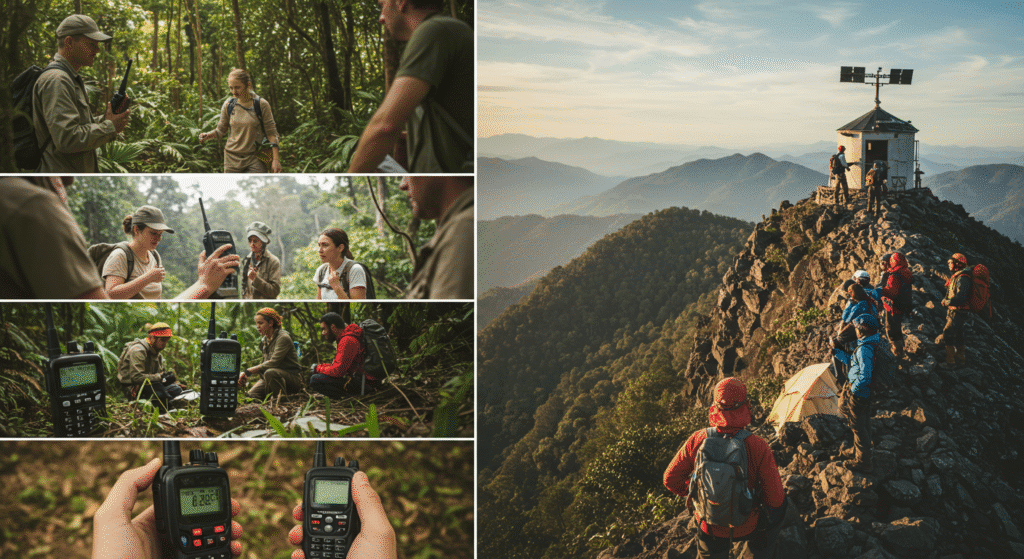
In an emergency, or even simply on a typical trek, it's important to stay in touch with your group or rescuers if things go wrong. What if you lost touch with your buddies while trying to take the ideal Instagram picture? Oh no!
If you're going to places where there isn't any cell coverage (which seems like going back in time), you can still chat to each other with walkie-talkies or satellite phones. If technology fails—and let's be honest, it does sometimes—having a whistle on standby could let those nearby know without having to squawk like a confused chicken.
It's also important to set up signals before you go out together so that everyone knows what each sound signifies. For example, three brief blasts could represent “Help!” while two long ones could mean “Dinner time!” Picture this: you're in the woods and someone sees a bear. They blow three shrill whistles instead of saying, “Hey! There's a bear!” which may cause pandemonium and maybe even a stampede. Everyone knows right away the signal means “emergency,” so they can act quickly without being scared. It's like having your own secret code!
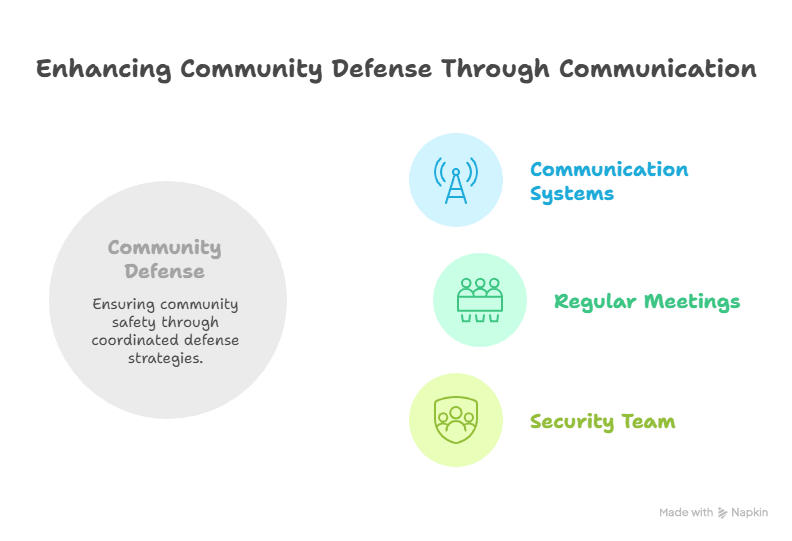
You might be wondering, “Why not just yell?” Let me tell you, shouting can make things more confusing quickly than a squirrel on coffee. Someone hears “bear,” someone else hears “dinner,” and all of a sudden people are fleeing in different directions—one toward safety and the other toward the picnic basket! Setting clear noises ahead of time can help prevent these kinds of mistakes that could cause people to panic later on down the trail.
So, how do we make these signals? Before you begin the trail, get your group together. Get together around the campfire (or whatever makeshift gathering location you have) and come up with ideas. Think of basic noises or movements that everyone can readily remember and copy. If you want something quieter, you may utilize hand gestures or whistle patterns. After all, some animals like quiet too!
Let's go one step further: make sure everyone knows how to use these signs before you set out on your excursion. It's not enough to just memorize them; you also need to be able to use them when you need to. While you're trekking, practice making emergency calls so they become second nature. It's like getting ready for a school play: you want to get those lines right before the limelight hits!
Also, think about using body language when sound isn't working, as when you're trying to stay quiet around animals or when someone has lost their voice after too many campfire songs. A hand raised could imply “stop,” while waving both hands could mean “danger.” These things help keep communication going without making people worry.
Having these set signals doesn't just get you ready for emergencies; they also help your organization work together and get along. When everyone is on the same page, it makes people feel better and promotes trust. Also, exchanging strange sounds can bring people together in a way that makes them feel better during grueling hikes. It can even become an internal joke.
In conclusion, it may seem like a small thing to set up clear communication signs, but it may really make a big difference in making outdoor activities safer and more cooperative. Don't forget to add this fun but important part when you plan a hike with friends or family. It could rescue the day when things don't go as planned!
Learning Basic Self-Defense Techniques
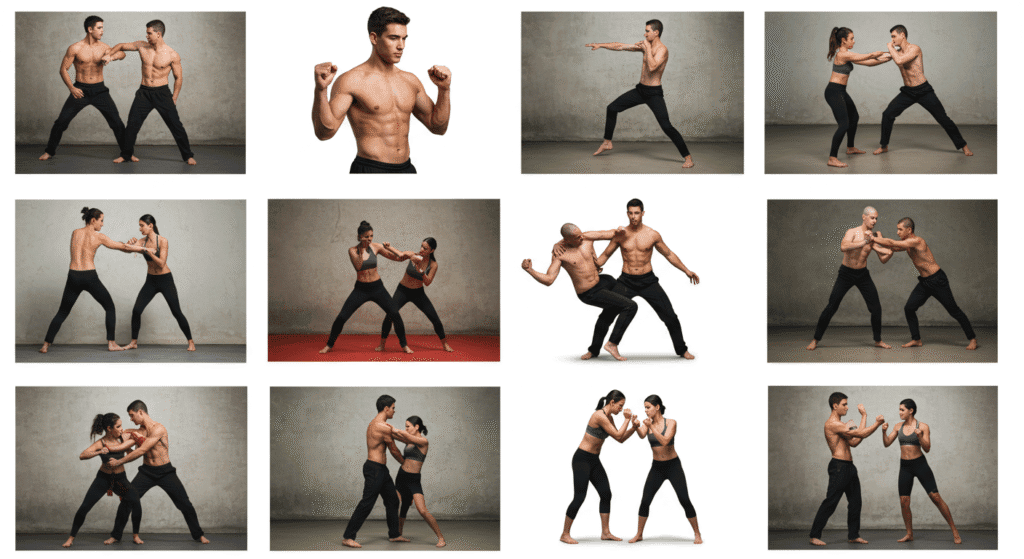
I hope you never have to use them, but learning some basic self-defense moves may really increase your confidence! Have you ever seen those action movies when someone throws punches like they're trained with ninjas? Well, life isn't that dramatic, but knowing a few easy techniques might help you stay safe if you need to.
You might want to take self-defense lessons in your area. They usually teach you important skills like how to get out of clutches (goodbye awkward hugs!) and how to use everyday items as weapons (a pen can be more than just a pen!). Imagine this: you're at a café, enjoying your favorite latte, when someone suddenly tries to take your bag. You recall that cool way to get out of a situation that you practiced last week instead of freaking out and spilling coffee all over the place. It's like having a superhero in your pocket.
You'll learn how to get out of different holds in these lessons. Believe me, it's not just about looking cool or feeling tough. Think about what it might be like to be caught in a bear embrace that wasn't friendly. If you know how to get free of that grip, you might be able to keep calm instead of flopping around like a fish out of water. Also, teachers frequently make the lessons pleasant and interesting. Instead of “rocky training montage,” they say, “let's laugh while we learn.”
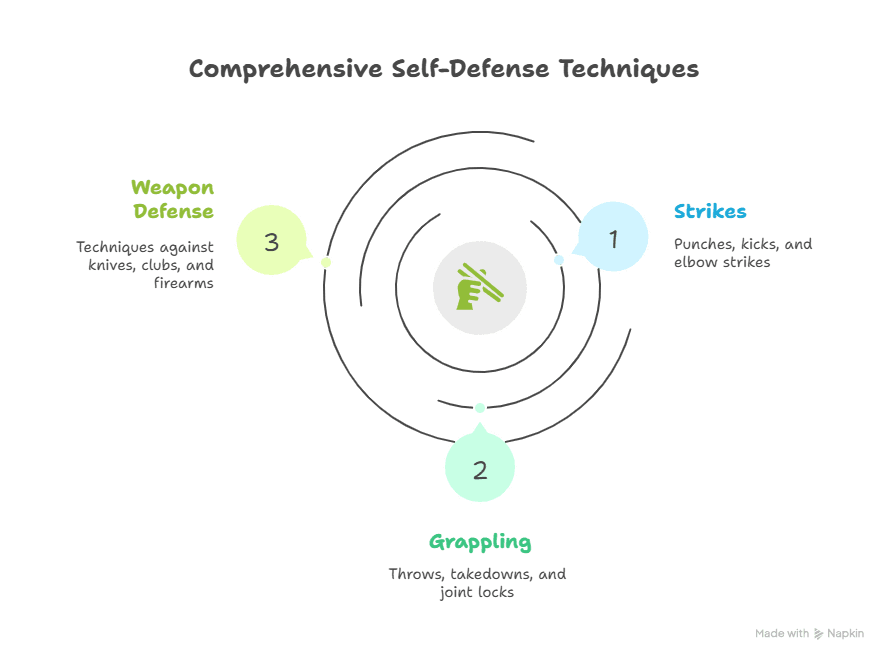
Now let's speak about things you use every day that can be used as weapons. You might wonder, “How can my keys protect me?” If you know how to use them, they can really hurt! Learning how to use everyday things, like your favorite pen, in new ways can make your self-defense toolkit even more creative. A single punch with the pen may stop an enemy faster than you can say “Who needs a sword?” And let's be honest: who doesn't want to feel like MacGyver in real life?
It's interesting that doing these things often helps you remember them when your adrenaline comes in! Have you ever noticed that when things get tense, people forget everything? Their hearts beat as their brains seem to stop working. When you practice those moves in class or even at home with friends (safely, of course), you're teaching your body to react without thinking, instead of freezing up like a deer caught in headlights. This muscle memory is really important because when you really need it, you don't want to have to think too hard.
Self-defense classes teach more than simply physical skills; they also teach useful mental skills. You'll learn how to swiftly figure out what's going on and make wise choices. Imagine it as making your inner radar more sensitive to danger. These talents provide you power by making you feel more confident via learning and practice. It's a win-win situation!
And don't forget about the social side! Taking a class in your area is a great opportunity to meet new people who are also interested in fitness and safety. You may make friends for life while learning some really cool talents. Who knows? Your new friend can become your best sparring partner or perhaps your hiking buddy!
So why not now? Find self-defense lessons near you right now! There's no downside to this, whether you want to protect yourself or just learn some cool skills to show off at parties (really, showing off those techniques is better than playing charades any day). Take advantage of the chance; it could provide you the tools you need for unforeseen situations in the future!
But really, just knowing where your personal space ends and begins can go a long way toward avoiding fights in the first place!
Final Thoughts on Survival Security and Defense
Survival, security, and defense aren't just buzzwords; they're important parts of remaining safe when you're out in the wild or dealing with ordinary problems at home. You'll have peace of mind wherever your next journey takes you if you prepare well by being aware of possible threats and using practical tactics like having the right gear ready and practicing self-defense abilities.
So, be ready carefully since every trip needs a hero, and why shouldn't that hero be you?
Frequently Asked Questions
Why is understanding threats important in survival?
Knowing potential dangers like wildlife, aggressive individuals, and environmental risks allows you to plan ahead and respond smartly instead of panicking.
What items belong in a basic survival safety kit?
Essential items include first aid supplies, a flashlight, a whistle, and a reliable multi-tool for multiple defensive and utility tasks.
How far should food be kept from sleeping areas when camping?
Food should typically be stored about 200 feet from where you sleep to reduce animal encounters and prevent wildlife from approaching your campsite.
How do I communicate in areas with no cell signal?
Use walkie-talkies, satellite devices, pre-planned whistle signals, and predetermined meeting spots to stay connected with your group.
Do self-defense classes really help in emergencies?
Yes—regular practice builds muscle memory and confidence, helping you respond quickly if threatened without freezing under stress.
Can everyday objects be used for self-defense?
Common items like pens or keys can be used as improvised defensive tools when applied strategically and safely.
Why is mindset part of defense?
A calm, prepared mindset improves decision-making, reduces fear responses, and helps you stay focused during unexpected situations.
Suggested External Resources
Basic Wilderness Survival Skills
https://www.wilderness-survival.net/
Self-Defense Techniques Everyone Should Know
https://www.selfdefense.com/techniques
Emergency Preparedness Tips
https://www.ready.gov/emergency-preparedness
Outdoor Safety Tips
https://www.nps.gov/articles/outdoor-safety.htm
Wilderness First Aid Basics
https://www.redcross.org/get-help/how-to-prepare-for-emergencies/wilderness-first-aid.html

Kevin Collier is a seasoned survivalist and expert in prepping and homesteading, contributing to WiseSurvive.com. With a deep-rooted passion for self-sufficiency and outdoor survival skills, Kevin shares practical advice, strategies, and resources to help individuals prepare for any challenge. His informative articles cover a range of topics, from essential survival techniques to sustainable living practices, empowering readers to thrive in any situation. Whether you're a novice or a seasoned prepper, Kevin's insights will inspire you to take charge of your readiness and build resilience for the future.


